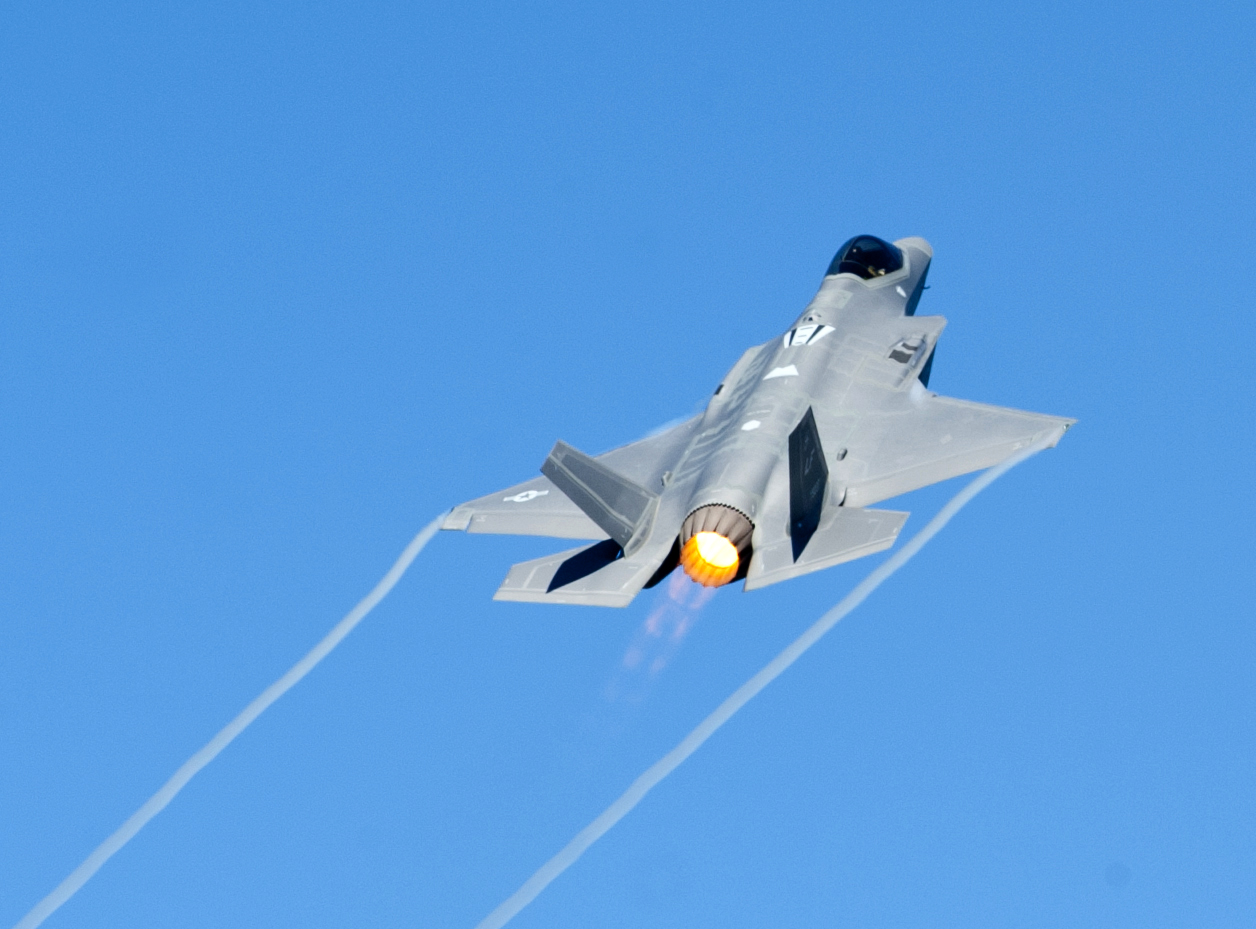The number of F-35s, like the one pictured above, to be bought in FY18 will be two less than in the enacted Fiscal 2017 budget. USAF photo by SrA. R. Alex Durbin.
John Tirpak
A boost in the number of new F-35 fighters the Air Force buys didn’t materialize the service’s Fiscal 2018 budget request. In fact, the number of F-35s to be bought in FY18 will be two less than in the enacted Fiscal 2017 budget.
According to Air Force budget charts, the FY18 budget includes just 46 F-35As, down two from the 48 funded in FY17 and down one from Fiscal 2016’s level of 47. Recently retired chief of Air Combat Command, Gen. Hawk Carlisle, told Air Force Magazine earlier this year that if there was to be a sharp increase in Air Force funding, as promised by the new administration, fighters ought to be the priority, because that category “has been the bill-payer” for many years, resulting in a sharply-reduced USAF fighter capacity.
Carlisle called for “at least” 60 F-35s a year, and 80 if possible, in order to more rapidly swap out aged fourth-generation fighters for new F-35s, virtually chanting a mantra of “buy rate, buy rate, buy rate.”
The Air Force did not explain the lack of a plus in the F-35 category and the Pentagon didn’t give out-year production numbers in budget briefings Tuesday. However, in written testimony for the house Armed Services Committee in February, Maj. Gen. Jerry Harris, deputy chief of staff for strategic plans, programs, and requirements, said the service might be better off waiting until 2021 to surge production of the F-35, because that’s when the first “Block IV” versions of the jet will start rolling off the production line.
Buying too many too soon would hand the Air Force a big modification bill to convert earlier-model jets to Block IV standard, Harris wrote. By 2021, he added, “we should examine the option of accelerating the F-35A program, above the current procurement rate.”
He forecast just 48 F-35As for the Air Force through 2022, when previous budgets had projected reaching 60 a year by that point. Harris’s numbers jibe with those contained in a Government Accountability Office report on the F-35 released last month. In it, a chart based on “GAO analysis of Department of Defense data” showed USAF buying only 46-48 F-35s in Fiscal 2018 and essentially staying flat at that rate until 2021, when there would be a jump to around 60.
F-35 program officials have said the slow ramp rate for the Air Force won’t translate to higher unit costs, since the program is about to see a sharp uptick in jets built for international partners and Foreign Military Sales. The so-called international “block buy” of F-35s beyond 2018 will maintain sufficient volume to allow unit costs to decrease below $80 million per copy in 2019.
